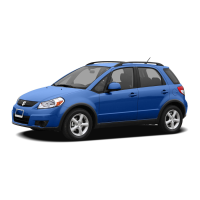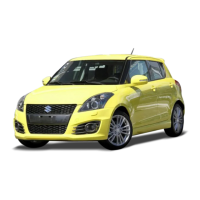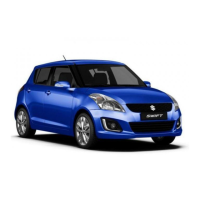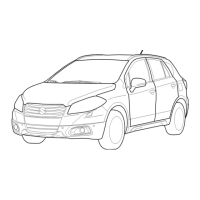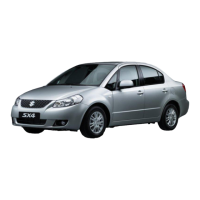2) Next, check bearing cap bore diameter with-
out bearing.
On mating surface of cylinder block, five
alphabets are stamped as shown in Fig.
3-5-46.
Three kinds of alphabets (“A”, “B” and
“C”) represent following cap bore diameters.
Alphabet
stamped
A
Bearing cap bore diameter
(without bearing)
49.000
-
49.006 mm)
(1.9292
-
1.9294 in.)
Color painted
Bearing thickness
1
B
49.006
-
49.012 mm
I
Colorless
2.002
-
2.006 mm
(1.9294
-
1.9296 in.)
(no paint)
(0.0788
-
0.0789 in.)
I
I
C
49.012
-
49.018 mm
(1.9296
-
1.9298 in.)
I
The first, second, third, fourth and fifth (left
to right) stamped alphabets indicate the cap
bore diameter of bearing caps “1”,
“2”,
“3”,
“4” and “5” respectively.
For example, in Fig. 3-5-46, the first (leftmost)
alphabet
“8”
indicates that the cap bore dia. of
bearing cap @ is within 49.006
-
49.012 mm,
and the fifth (rightmost) alphabet “A” indicates
that the cap bore dia. of cap @ is within 49.000
-
49.006 mm.
r-l
Fig.
3-5-46
Stamped alphabets on cylinder
block
3) There are five kinds of standard bearings
differing in thickness. To distinguish them,
they are painted in following colors at the
position indicated in Fig. 3-5-47.
Each color indicates the following thicknesses
at center of bearing.
1. Paint
Fig. 3-5-47 Paint on standard bearing
4) From the numeral stamped on crank webs of
No. 2 and No. 3 cylinders and the alphabets
stamped on mating surface of cylinder block,
determine new standard bearing to be install-
ed to the journal, by referring to the table
shown below.
For example, if numeral stamped on crank
web is “1” and alphabet stamped on mating
surface is
“8”,
install new standard bearing
painted in “Black” to its journal.
3-31
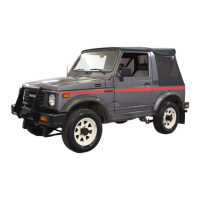
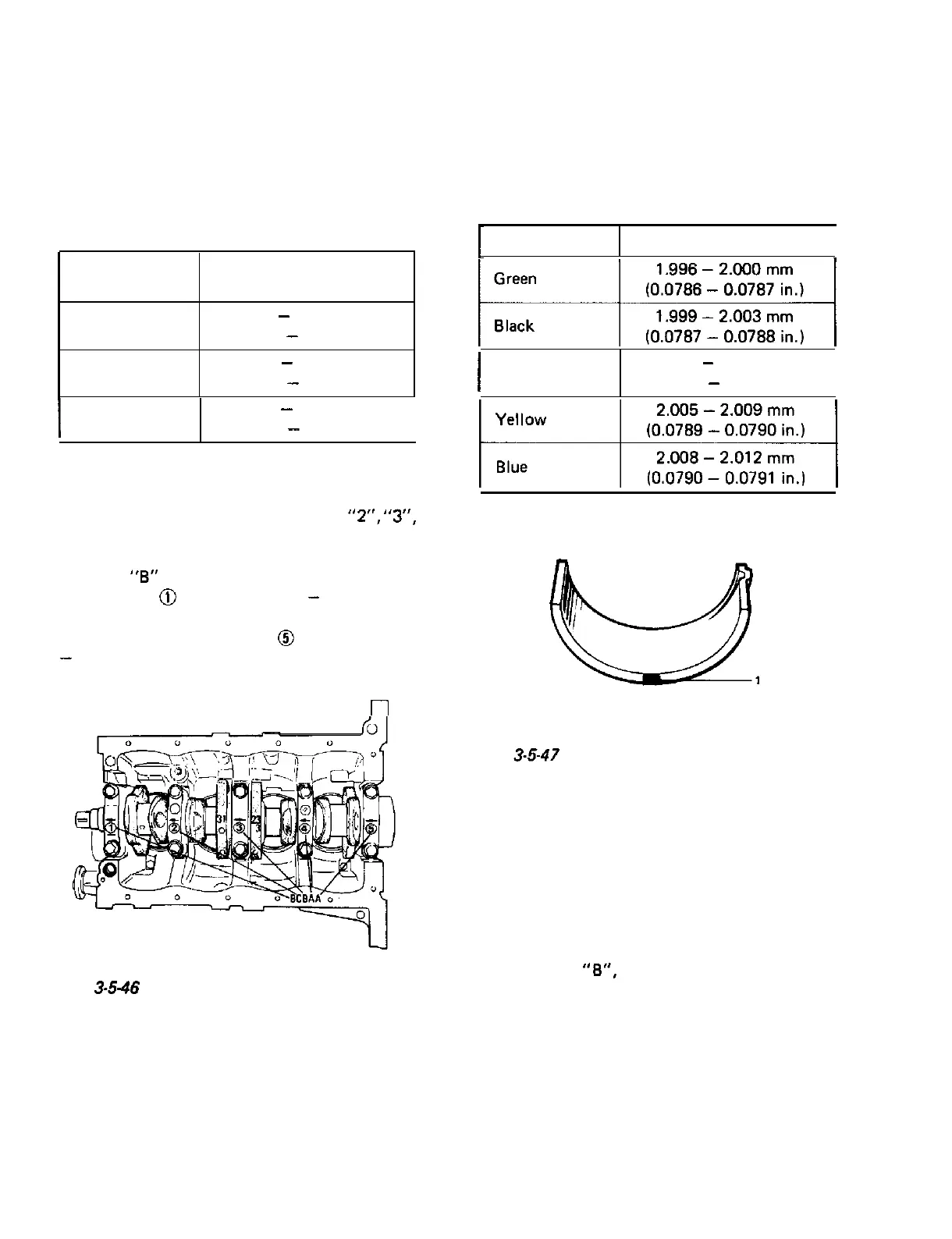